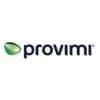Bentonita como adsorbente de arsénico y plomo en el tracto digestivo de bovinos: estudio in vitro
Objetivo. Determinar la dosis recomendable de bentonita como quelante de arsénico (As) y plomo (Pb) en el medio ruminal, abomasal y duodenal mediante un sistema in vitro, considerando las variables de fermentación ruminal y el efecto adsorbente de As y Pb. Materiales y métodos. Se prepararon viales con 50 mL de medio anaerobio y 0.5 g de alfalfa como sustrato. Los medios se adicionaron con 1.01 y 1.95 ppm de As y Pb, respectivamente. Los tratamientos consistieron en el nivel de bentonita (B) adicionada al medio, B-0%, B-1.5%, B-3.0% y B-4.5%. Los medios se incubaron durante 24 h y se midió el pH, producción de AGV, N-NH3, degradabilidad in vitro de MS (DIVMS) y efecto quelante de la bentonita, simulando las condiciones del rumen, abomaso y duodeno. Se usó un diseño completamente al azar y contrastes ortogonales. Resultados. La bentonita no modificó el pH ni la proporción molar de AGV (p>0.05), pero la producción total de AGV presentó un efecto lineal negativo al aumentar el nivel del mineral. Asimismo, el N-NH3 disminuyó (p<0.05) al adicionar bentonita. La DIVMS fue menor con B-3.0% y B-4.5% (52.36b y 49.74b%) en comparación con B-0% y B-1.5% (62.30a, 61.98ª). La inclusión de B-1.5% y B-4.5% mejoró (p<0.05) la adsorción de As y Pb en el medio ruminal, abomasal y duodenal. Conclusiones. La proporción de bentonita recomendable como quelante de As y Pb es de 1.5%, ya que la dosis de 4.5% afectan la DIVMS y por consiguiente, la productividad animal.
Palabras clave: Quelante; arsénico; plomo; ganado lechero; arcillas (Fuente: DeCS).
INTRODUCCIÓN
MATERIALES Y MÉTODOS

Variables evaluadas
Adsorción de metales pesados
RESULTADOS



DISCUSIÓN
Conflictos de intereses
Agradecimientos
Financiación
1. Castro-González NP, Calderón-Sánchez F, Moreno-Rojas R, Moreno-Ortega A, TamarízFlores JV. Health risks in rural populations due to heavy metals found in agricultural soils irrigated with wastewater in the Alto Balsas sub-basin in Tlaxcala and Puebla, Mexico. Int J Environ Health Res. 2017; 12:476-486. http://dx.doi.org/10.1080/09 603123.2017.1386767
2. Castro-González NP, Calderón-Sánchez F, Castro-de Jesús J, Moreno-Rojas R, TamarízFlores JV, Pérez-Sato M, Soní-Guillermo E. Heavy metals in cow’s milk and cheese produced in areas irrigated with waste water in Puebla, Mexico. Food Addit Contam: Part B. 2018; 11:33-36. https://doi.org/10.108 0/19393210.2017.1397060
3. Covarrubias SA , Peña-Cabriales JJ . E n v i r o nm e n t a l c o n t am i n a t i o n b y heavy metals in Mexico: problems and phytoremediation strategies. Rev Int Cont Ambien. 2017; 33:7-21. https://doi. org/10.20937/RICA.2017.33.esp01.01
4. Rodríguez Fuentes H, Sánchez-Alejo E, Rodríguez-Sánchez M, Vidales-Contreras JA, Acuña-Askar K, Martínez-Turanzas G, Rodríguez-Ortíz JC. Heavy metals in raw bovine milk. Rev de la Fac Sal Púb Nutri. 2005; 6(4):1-12. https://respyn.uanl.mx/ index.php/respyn/article/view/155
5. Eróstegui RCP. Contaminación por metales pesados. Rev Cient Cienc Méd. 2009; 12:45- 46.
6. Tejeda-Tovar C, Villabona-Ortíz Á, GarcésJaraba L. Adsorción de metales pesados en aguas residuales usando materiales de origen biológico. Tecno Lógic. 2015; 18(34):109-123. https://doi.org/10.22430/22565337.209
7. Zanin E, Scapinello J, De Olivera M, LazarottoRambo C, Franscescon F, Freitas L, et al. Adsorption of heavy metals from wastewater graphic industry using clinoptilolite zeolite as adsorbent. Process Saf Environ Prot. 2017; 105:194-200. https://doi.org/10.1016/j. psep.2016.11.008
8. Kraljevic-Pavelic S, Simovic-Medica J, Gumbarevic D, Filosevic A, Przulj N, Pavelic K. Critical review on zeolite clinoptilolite safety and medical applications in vivo. Front Pharmacol. 2018; 9:1-16. https://doi. org/10.3389/fphar.2018.01350
9. Sánchez-Santillán P, Herrera-Pérez J, Torres-Salado N, Almaraz-Buendía I, Reyes-Vázquez I, Rojas AR, Gómez-Trinidad M, Contreras-Ramírez EO, MaldonadoPeralta MA, Magadán-Olmedo F. Chemical composition, and in vitro fermentation of ripe mango silage with molasses. Agroforest Syst. 2020; 94:1511-1519. https://doi. org/10.1007/s10457-019-00442-z
10. Cobos-Peralta MA, Curzaynz-Leyva K, Rivas-Martínez R, Santillán-Gómez MI, Bárcena-Gama JR. In vitro effect of diets for growing lambs supplemented with dried distillers grains on rumen fermentation and gas emissions. Agrociencia. 2018.52(2): 203–215. https://agrociencia-colpos.org/ index.php/agrociencia/article/view/1663
11. McCullough H. The determination of ammonia in whole blood by a direct colorimetric method. Clin Chim Acta. 1967; 17(2):297–304. https://doi. org/10.1016/0009-8981(67)90133-7
12. Rojas-García AR, Hernández-Ayona A, Sánchez-Santillán P, Alaniz-Gutierrez L, Torres-Salado N, Herrera-Pérez J, EscobarEspaña JC. Cinética de fermentación y degradación in vitro de tres leguminosas ra s t re ra s na tiva s del muni cipio de Cuajinicuilapa, Guerrero. Rev Investig Vet Perú. 2018; 29(4):1229-1236. http:// dx.doi.org/10.15381/rivep.v29i4.14340
13. SAS Institute, SAS User’s Guide: Statistics Version 9.2. Statistical Analysis System Institute Cary, North Carolina, 2010; USA.
14. Kordi M, Naserian AA, Samadia, F. The influence of adding polyethylene glicol and activated sodium bentonite on the performance, blood parameters, and muscle mineral content of saanen goats fed pistachio byproducts. Ir J Apl Anim Sci. 2022; 12(2):303-313. https://ijas.rasht. iau.ir/article_691846_938568bb67fa9267 278e780e3a010be8.pdf
15. Mohsen K, Sirjani MK, Tahmasbi AM, Khoram Abadi EI, Torbaghan AE. Effects of sodium and calcium bentonite on growth performance and rumen ammonia in Holstein bulls. Lives Res Rural Develop 2017; 29(8):1-10. https://lrrd.cipav.org. co/lrrd29/8/phd29144.html
16. El-Nile EA, Elazab AM, Soltan AY, Elkomy EA, El-Zaiat MH, Sallam MAS, El-Azrak EK. Nano and natural zeolite feed supplements for dairy goats: Feed intake, ruminal fermentation, blood metabolites, and milk yield and fatty acids profile. Anim Feed Sci Technol. 2023; 295:115522. https://doi. org/10.1016/j.anifeedsci.2022.115522
17. Roque-Jiménez JA, Pinos-Rodríguez JM, Rojo-Rubio R, Mendoza GD, Vázquez A, Cayetano de Jesús JA, Lee-Ranel HA. Effect of natural zeolite on live weight changes, urinal fermentation and nitrogen metabolism of ewe lambs. S Afr J Anim. 2018; 48(6):1148-1155. http://dx.doi.org/10.4314/sajas.v48i6.19
18. Ghoneem WM, El-Tanany RR, Mahmoud AE. Effect of natural zeolite as a rumen buffer on growth performance and nitrogen utilization of barki lambs. Pakistan J. Zool 2022; 54(3):1199-1207. https://dx.doi. org/10.17582/journal.pjz/20191207121206
19. Sulzberger SA, Kalebich CC, Melnichenco S, Cardoso FC. Effects of clay after a grain chalennge on milk composition and on ruminal, blood and fecal pH in Holstein cows. J Dairy Sci. 2016; 99(10): 8028-8040. https://dx.doi.org/10.3168/jds.2016-11030
20. Urías-Estrada JD, López-Soto MA, Barreras A, Aguilar-Hernández JA, GonzálezVizcarra VM, Estrada-Angulo A, Zinn RA, Mendoza GD, Plascencia A. Influence of zeolite (clinoptilolite) supplementation on characteristics of digestion and ruminal fermentation of steers fed a steam-flaked corn-based finishing diet. Anim Prod Sci. 2018; 58(7):1239-1245. http://dx.doi. org/10.1071/AN16128
21. Sutton JD, Dhanoa MS, Morant SV, France J, Napper DJ, Schuller E. Rates of production of acetate, propionate, and butyrate in the rumen of lactating dairy cows given normal and low-roughage diets. J Dairy Sci. 2003; 86(11):3620-3633. https://doi. org/10.3168/jds.S0022-0302(03)73968-X
22. Goodarzi M, Nanekarani S. The effect of calcic and potassic clinoptilolite on ruminal parameters in Lori breed sheep. ICAAA 2012; 23(4):140-145. https://dx.doi. org/10.1016/j.apcbee.2012.11.024
23. Amanzougarene Z, Fondevila M. Rumen Fermentation of feed mixtures supplemented with clay minerals in a semicontinuous in vitro system. Animals. 2022; 12:345-356. https://doi.org/10.3390/ani12030345
24. Elitok B, Guvlu S. Investigation on effects of orally given sepiolite on ruminal protozoa in cattle. J Harmoniz Res Med and Hlth Sci. 2017; 4(4):163-173. https://doi. org/10.3168/jds.S0022-0302(03)73968-X
25. Kazemi M, Eskandary T, Tahmsabi AM, Valizadeh R, Naserian AA. Effects of phosalone consumption feeding with or without sodium bentonite on performance, blood metabolites and its transition to milk of Iranian Baluchi sheep. J Animal Sci Technol. 2017; 59(10):1-11. https://doi. org/10.1186/s40781-017-0135-7
26. Tánori-Lozano A, Montalvo-Corral M, Pinelli-Saavedra A, Valenzuela-Melendres M, Zamorano-García L, Dávila-Ramírez JL, González-Ríos H. Inclusión dietaria de clinoptilolita como aditivo en la producción de rumiantes. Revista Biotecnia. 2022; 25(1):51-60. http://dx.doi.org/10.18633/ biotecnia.v25i1.1759
27. Gutiérrez O, Galindo J, Oramas A, Cairo J. Effect of bentonite and zeolite supplementation on the protection of rumen protein. In vivo studies. Rev Cubana Cienc Agric. 2008; 42(3):259-261.
28. Smelcerovic M. Adsorption of ammonia by base activated bentonite clay kinetic and equilibrium studies. Knowl Int J. 2018; 28(4):1251-1257. https://doi.org/10.35120/kij28041251M
29. Sharmaa P, Sutara PP, Xiaob H, Zhangc Q. The untapped potential of zeolites in technoaugmentation of the biomaterials and food industrial processing operations: a review. J Future Foods. 2023. 3-2: 127–141. https:// doi.org/10.1016/j.jfutfo.2022.12.004
30. Días J, Huelvan C, Dinis MT, Metailler R. Influence of dietary bulk agents (silica, cellulose and natural zeolite) on protein digestibility, growth, feed intake and feed transit time in European seabass (Dicentrarchus zabrax) juveniles. Aquat Living Resour 1998; 11(4):219-226. https:// doi.org/10.1016/S0990-7440(98)89004-9
31. Ghaemnia L, Bojarpour M, Mirzadeh K, Chaji M, Eslami M. Effects of different levels of zeolite on digestibility and some blood parameters in arabic lambs. J Anim Vety Adv. 2010; 9(4):779-781. https://doi. org/10.3923/javaa.2010.779.781
32. Johnson MA, Sweeny TF, Muller LD. Effects of feeding synthetic zeolite A and sodium bicarbonate on milk production nutrient digestion, and rate of digesta passage in dairy cows. J Dairy Sci. 1988; 71:946- 953. https://doi.org/10.3168/jds.S0022- 0302(88)79640-X
33. Jugdaohsingh R, Anderson SH, Tucker KL, Elliott H, Kiel DP, Thompson RP, Powell JJ. Dietary silicon intake and absorption. Ame J Clin Nutr. 2002; 75(5):887–893. https:// doi.org/10.1093/ajcn/75.5.887
34. Dzagurov B, Eremenko VI, Karlov AG, Payukhina MA, Suvorova VN. The effect of bentonite feeding for young cattle on the exchange of nitrogen, mineral elements and the digestibility of diet nutrients. E3S Web Conf. 2021; 254:1-6. https://doi. org/10.1051/e3sconf/202125408028
35. Mejía-Zamudio F, Valenzuela-García J, Aguayo-Salinas S, Meza-Figueroa D. Arsenic adsorption of natural zeolite pretrated with magnesium oxides. Rev Int Contam Ambie. 2009; 25(4):217-227.
36. Carbonel-Ramos, D. Adsorption of cadmium, copper and lead with natural and modified bentonite, kaolin and natural zeolites: a review of process parameters, isotherms and kinetics. Ingeniería. 2018; 23(3):252-273. https://doi.org/10.14483/23448393.13418
37. Hussain ST, Ali SA K. Removal of heavy metal by ion exchange using bentonite clay. J Ecol Eng. 2021; 22(1):104-111. https://doi. org/10.12911/22998993/128865
38. Lazarus M, Orct T, Blanusa M, Vickovic I, Sostanic B. Toxic and essential metal concentrations in four tissues of red deer (Cervus elaphus) from Baranja, Croatia. Food Addit Contam Part A. 2008; 25(3):270-283. https://doi.org/ 10.1080/02652030701364923
39. Mandal P. An insight of environmental contamination of arsenic on animal health. Emerg Contam. 2017; 3:17-22. http:// dx.doi.org/10.1016/j.emcon.2017.01.004
40. Lashkari S, Haibian M, Jensen SK. A Review on the role of chromium supplementation in ruminant nutrition—effects on productive performance, blood metabolites, antioxidant status, and immunocompetence. Biol Trace Elem Res. 2018; 186(2):305-321. https:// doi.org/10.1007/s12011-018-1310-5










